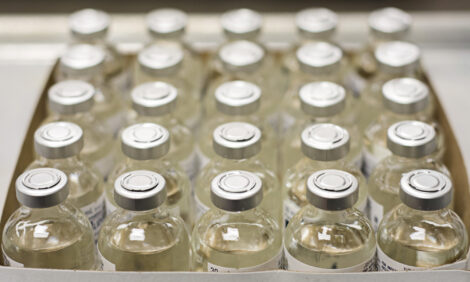



Feed Consumption Critical in Broiler Growing
INDIA - Commercial broilers are grown throughout the world and broiler chicken is becoming the most affordable, delicious and nutritious protein, writes Dr T. Kotaiah from Indbro.Broiler rearing time to a fixed weight has been falling at one day every year.
The markets in USA focus totally on deboned breast meat and they grow broilers to 2.7-3 kg.
The realised yield is higher in larger birds.
The Spring chicken weighing 1.2Kg live, yielding 900gms dressed tender chicken is ready in 26-28 days.
This is a popular chicken in the Middle East and for restaurants.
Most of the world markets focus on a two kilogram live broiler yielding a 1.5 kg dressed chicken.
A 2 kg bird, which was reared in 42 days in 2010, is ready for the market in 37 days or less in 2015.
Some nutritional trials with the best of the feed forecast that a 2 kg bird can be achieved in 34-35 days.
With a 35 day growing cycle, broiler production has become a very attractive enterprise in many countries.
In an integrated production model by big companies with their own day old chicks and compounded feed, broiler growing is an easy job.
Countries such as India, where contract farming is possible on small farms on an “All In All Out” basis, broiler growing has become even more attractive.
Financial investment in broilers on a daily basis for 37 days and harvesting the returns at one time is an excellent financial model in any business.
This scenario is seeing new players regularly entering the market consistently resulting over production.
Over production in a live bird market leads to hourly fluctuations in bird prices.
The chick producing broiler producer cannot stop or start the operation at will.
There will be some months or periods when prices will be predictably low and every producer has to look at these variables in the production.
The amount of feed used is a major variable and contributes to 60-70 per cent of the production cost.
When the markets are blooming, the producer can afford to feed more and get to the market weight faster.
When the market prices are bad, the grower may think of reducing the quantity of feed used or working with a bird eating less feed.
Income depends mostly on the weight of the bird and the number of birds sold. The variable in expenditure is mainly seen in the feed cost and quantity.
The following trial compares two birds, which had similar mortality. They vary on growth profile to some extent but considerably in feed consumption.
One bird gained to 2.33 kg weight on 3.8 kg of feed with an FCR of 1.6. The other bird ate just 2.8Kg feed achieving a weight of just 2.03 kg.
| BREED | INDBROFAST FSY | COMPETITOR | DIFFERENCE |
| Chick Weight | 41Gms | 46Gms | -6Gms |
| Total Chicks | 300 | 300 | |
| No Died | 19(6.3%) | 20(6.6%) | -0.3% |
| Feed To Finish | 2.854Kg | 3.806Kg | -0.954Kg |
| Average Weight | 2.004Kg | 2.33Kg | -0.326Kg |
| FCR | 1.42 | 1.63 | -0.21 |
| Feed Cost /Kg | 27 | 27 | |
| Feed Expenses | Rs 77 | Rs102.8 | INR (-25.8) |
| Sale Value @ INR 70 | 140 | 163 | INR (-23) |
| Return on Feed | 63 | 61 | INR +2 |
| Sale Value@ INR 60 | 120.2 | 139.8 | INR (-19.6) |
| Return on Feed | 43.2 | 37 | INR +6 |
| Sale Value@ INR 50 | 100.2 | 116.5 | INR (-16.3) |
| Return on Feed | 23.2 | 13.7 | INR +9.5 |
It should be noted that the bird eating less feed is more profitable, despite a 330 gram reduction in weight gain.
The gap widens as the price of chicken falls and the birds eating lot of feed can prove to be uneconomical.
( Dr.T.Kotaiah can be contacted at [email protected])








